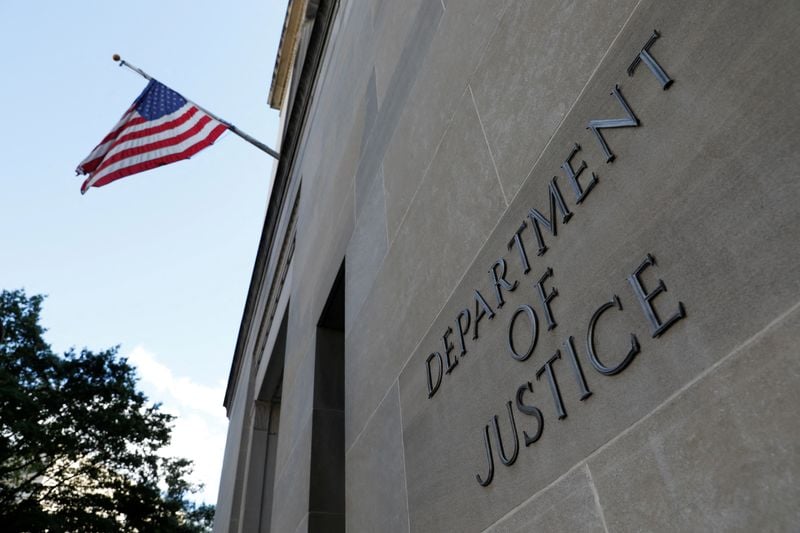Baltimore, Maryland – U.S. District Judge Richard D. Bennett sentenced Desmond Babloo Singh, age 20, of Temple, Texas, late yesterday to 18 months in federal prison, followed by one year of home detention as part of three years of supervised release, for two counts of cyberstalking.
The sentence was announced by United States Attorney for the District of Maryland Erek L. Barron; Special Agent in Charge James R. Mancuso of Homeland Security Investigations (HSI) Baltimore; and Chief Melissa R. Hyatt of the Baltimore County Police Department.
According to his guilty plea, from April 18, 2020, to November 24, 2020, Singh used more than 100 different social media accounts, phone accounts, and various electronic communication tools to send harassing messages to Victim 1. The hundreds of public social media posts, text messages, and private social media messages included threats of death, bodily injury, sexualized violence, and racial slurs. Many of the accounts created and used by Singh incorporated Victim 1’s name, making it appear as if the accounts were owned and operated by her.
In early 2020, Singh sent Victim 1 online communications expressing his romantic interest in her. After Victim 1 rebuffed Singh’s advances and asked him not to contact her, Singh commenced a months’ long cyberstalking campaign against both Victim 1 and Victim 2, the latter of whom Singh viewed as a romantic rival.
Singh frequently used the fraudulent accounts he created to denigrate Victim 1’s character, appearance, and make the assertion that Victim 1 was “obsessed” with him. Singh’s harassing conduct included, among other things, numerous implied threats of bodily injury or death. For instance, Singh used a fraudulent social media account to send Victim 1 an image in which the faces of her and her family members were superimposed on the faces of several individuals hanging from nooses. In another edited picture, Singh superimposed Victim 1’s mother’s face on the body of a grieving woman at a grave site.
On or about July 19, 2020, Victim 1 received a “follow” request on a social media platform from an account that Singh created. On this account, Singh had posted pictures of Victim 1 and her family home. Additionally, Singh posted Victim 1’s parents’ address in Maryland and stated there would be a party there the following day. The following day, July 20, 2020, a Baltimore County Police Department employee received an anonymous email telling law enforcement to investigate a possible bomb at the parents’ home. Law enforcement officers responded to the residence only to learn that the bomb threat was a hoax. The federal investigation into Singh’s conduct revealed that Singh had solicited another individual to make the anonymous claim, in order to provoke an emergency police response to Victim 1’s parents’ home, referred to as “swatting.”
In furtherance of his harassment campaign against Victim 1, Singh also posted Victim 1’s personal information online including her birthdate, name, personal phone number, school, social media identities, and other identifying information. This form of online harassment is commonly referred to as “doxing”.
During the investigation of Singh’s harassment campaign, investigators discovered notes in Singh’s phone that documented his plans to harass Victim 1, including the plans to physically assault Victim 1’s family members, post over 10,000 messages relating to Victim 1’s friends, harass Victim 2, and take pictures of Victim 1 in real life.
Singh not only harassed Victim 1, but he also harassed Victim 2, whom he perceived to be a romantic rival. As he had done with Victim 1, Singh created numerous social media accounts incorporating Victim 2’s real name and publicly posted his personal information. Using an anonymous account, Singh posted a video of an unidentifiable person knocking on the door of Victim 2’s former residence with a caption telling Victim 2 to answer the door. Singh later posted the same video on an online platform which included Victim 2’s name, the former address of Victim 2, and a statement stating that he went to Victim 2’s residence to fight Victim 2.
United States Attorney Erek L. Barron commended the HSI and the Baltimore County Police Department for their work in the investigation. Mr. Barron thanked Assistant U.S. Attorney Christopher M. Rigali, who prosecuted the case.
For more information on the Maryland U.S. Attorney’s Office, its priorities, and resources available to help the community, please visit www.justice.gov/usao-md and https://www.justice.gov/usao-md/community-outreach.
# # #
